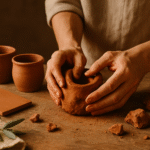Variegation appears as colored zones on plant leaves, stems, or flowers. Patterns emerge as stripes, spots, or distinct borders. Plant enthusiasts prize those contrasts for visual impact. A 2024 survey found 68 percent of indoor gardeners favor variegated species for decorative appeal (Garden Living Journal, 2024).
What causes variegation in houseplants?
Genetic mutation produces chimeral variegation by creating tissues with and without chlorophyll. Pattern-gene inheritance embeds pigment layouts directly into DNA. Structural traits form tiny air pockets that reflect light and create a silvery sheen. Pigment shifts generate reds, pinks, or purples when anthocyanins mask chlorophyll zones. Viral infection disrupts chlorophyll production and yields mottled mosaics.
Researchers report chimeral variegation accounts for 60 percent of variegated cultivars in the commercial trade (Horticultural Science Review, 2022).
How many variegation types exist?
Chimeral: Two genetic layers, one green and one pale
Pattern-gene: Stable, DNA-encoded pigment arrangements
Blister (reflective): Air pockets create a metallic look
Pigmentary: Non-chlorophyll pigments form colored patches
Pathological (viral): Virus-induced disruption of green tissues
What impact does variegation have on growth?
Leaf areas without chlorophyll cannot photosynthesize effectively. Growth slows by up to 30 percent in variegated Monstera deliciosa compared to solid-green cultivars (Journal of Horticultural Science, 2021). Reduced pigment density raises light requirements and increases vulnerability to spider mites. Mineral deposits from hard water can cause brown spots on pale zones.
How should you care for variegated plants?
You provide bright indirect light to support energy needs. You avoid direct sun to prevent burns on white or colorful zones. You water with distilled or rainwater to prevent mineral browning. You maintain humidity above 50 percent to support delicate tissues. You inspect leaves weekly and treat pests at the first sign.
How can you preserve and encourage variegation?
You prune pure-green shoots to channel growth into variegated sections. You propagate cuttings that display strong patterns. You rotate plants weekly for even light distribution. You alternate bright light and brief shade to intensify contrast.
What final thought can guide you?
You nurture variegation with light, water, and pruning. You will see bold patterns and stronger growth.
FAQs
Can variegation revert?
Pattern-gene variegation remains stable. Chimeral variegation may change under low light.
How do you boost variegation?
You place plants in bright indirect light. You prune solid-green shoots.
What causes brown spots?
Hard water minerals leave brown marks. Pest damage also affects pale zones.
Which patterns are prized?
Sectorial and mosaic patterns attract collectors. Rarity drives higher value.
| “Quick tips, fast inspiration—live your best life with quickfast.blog.” |



